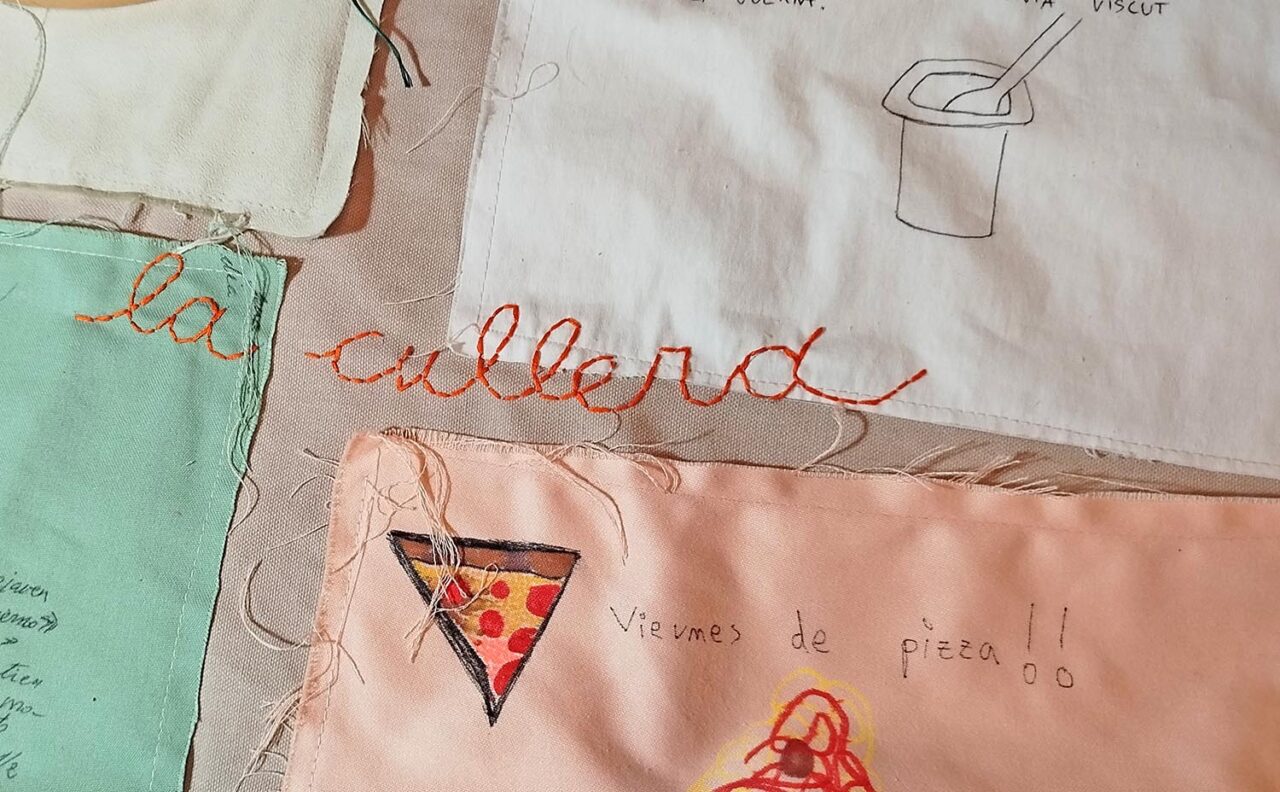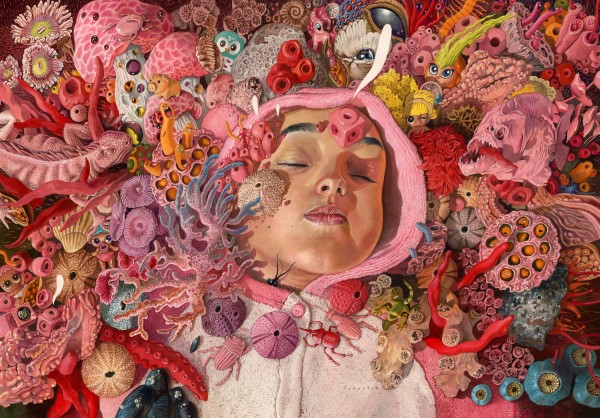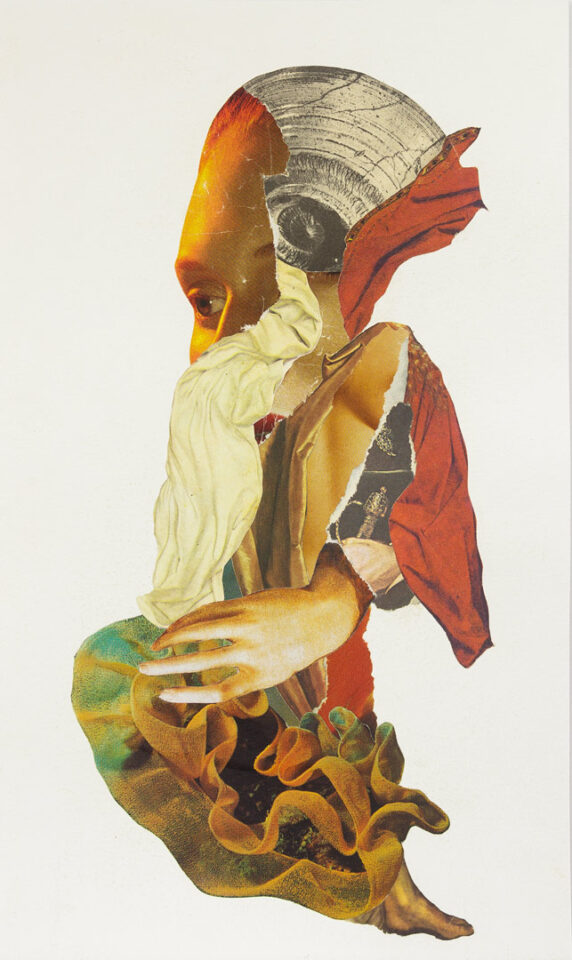Intervention“Una cambra pròpia” vindicates the role of women in the history of design
The intervention“Una cambra pròpia” vindicates the role of women in the history of design and is a tribute to all these women who have had a vocation for the discipline of furniture design and small objects and, above all, who have contributed their ingenuity and intelligence to the sector. Ten contemporary designers have created different pieces of furniture and objects inspired by the person or legacy of pioneering artists in the world of design. The title “A Room of One’s Own” alludes to Virginia Woolf’s essay “A Room of One’s Own”. An analogy transported to the world of applied arts, which recreates a room composed of 10 unique pieces of furniture that Sanna Völker, Laura Molina, Carla Cascales, Marria Pratts, Ines Sistiaga, Jana Tothill, Mariadela Araujo, si.atelier, Rosa Cortiella and Mago Hart have created, each inspired by a pioneering designer.
- Carla Cascales is inspired by Eileen Gray (Enniscorthy, 1878 – Paris, 1976) with Chaise longue: The starting point for designing this piece begins with a question. What would Eileen’s most iconic and personal construction, the villa E-1027, be like if it were an armchair? Given that the house was conceived as a summer vacation residence, Cascales designs an armchair that could function as a “lounger” designed to rest near the sea, read in the sun, rest…
Carla Cascales, based in Barcelona, mixes minimalism with architectural influences such as brutalism and a strong Mediterranean essence. Her work is inspired by the Japanese aesthetic of “Wabi Sabi”, emphasizing the beauty of irregularity and impermanence. Cascales constantly explores the essence of forms and balances natural materials, giving great value to authenticity. She finds deep inspiration in the fluidity, calm, depth, reflections of light and the vastness of the Mediterranean.
Carla Cascales has held solo exhibitions in cities such as Barcelona, Madrid, London and Los Angeles, and has created art installations in institutions such as Matadero Madrid and La Caixa in Barcelona. Her work is part of the collections of institutions such as MACBA and the Masaveu Peterson Foundation. She was named Best Emerging Artist at the Swab d’Art fair in Barcelona.
- Ines Sistiaga is inspired by Lilly Reich (Berlin, 1885-1947) with Desk Chair: This version of the MR 10 Weissenhof chair literally weaves Lilly Reich’s biography into the object. The original design was a work co-authored by Lilly Reich and Mies van der Rohe in 1927. In this interpretation, Sistiaga transforms this piece into a double seat, and her intervention in the design triangulates the authorship between the creative duo, while shedding light under Mies’ shadow to illuminate Reich’s enduring influence in the world of design and architecture.
Inés Sistiaga is a textile designer and researcher who lives in Madrid. After studying Jewelry at the Escola Massana in Barcelona, she moved to the Netherlands to pursue a degree in design at the Design Academy Eindhoven. A university professor and independent designer, she develops as a textile researcher and knitwear programmer, and offers advice on creative projects.
With her work, focused mainly on the exploration of textile materials and structures, she develops studies that range from function to aesthetics and from technique to decoration. Through processes of trial and error, Inés explores visual languages and material constructions through artisanal and digital technology. For Sistiaga, textiles are a tool. Her research materializes in proposals within the field of Design and Interior Design.
- Jana Tothill draws inspiration from Anni Albers (Berlin 1899 – Connecticut 1994) with Curtain: Inspired by Anni Albers’s pictorial fabrics, this piece is an ode to the spaces we call our own and an inquiry into our collective capacity to observe our surroundings. Here, the concept of home and place is important: as a sphere often associated with women, the artist dedicated herself to creating the quilted curtain as a three-generation project with her mother and grandmother.
Designer and researcher with a strong focus on sustainable practices and innovative design methodologies. With a BA in Spatial Design from the University of the Arts London and a MA in Design for Emerging Futures from the Institut d’Arquitectura de Catalunya, she is committed to creating transformative experiences in the field of design. Her extensive professional background includes roles in design research, curation and education, highlighting her adaptability and dedication to driving positive change in the industry.
Her work focuses on the research and exploration of materials, engaging in sustainable and innovative solutions, urban planning and the development of intergenerational living spaces, as well as experimenting with new design methods and theories, such as posthumanism and feminist materialism. A fundamental part of her work is also based on collaborating with other designers and artists to create installations and experiences that provoke reflection.
- Sanna Völker is inspired by Aino Aalto (Helsinki 1894 – 1949) with Mirrors: Inspired by Scandinavian folklore and the glass works of Finnish architect Aino Aalto, the mirrors take on the three-dimensional form of reflective water waves. Näkki is the folk tale of a mystical water spirit that lurks in lakes, ponds and the murky water under bridges, captivating readers in search of their own reflection.
She is a Swedish-born designer who works between Scandinavia and Spain. Sanna’s work can be described as a search for balance between rawness and refinement, harmony and intrigue. Her designs often have architectural references manifested in furniture and objects of pure forms. Working with natural materials, her pieces consist of clear geometries of timeless expression.
- Marria Pratts is inspired by Charlotte Perriand (Paris 1903 – 1999) with Desk
Marria Pratts (Barcelona, 1988) is an artist who exudes an uninhibited and spontaneous aura through her creations. Inspired by her immediate surroundings, in L’Hospitalet, her work can be interpreted as a challenge to the structures of our society, to the contradictions that permeate the urban landscape and to the challenges of living under the constant threat of gentrification. With his instinct for artistic creation, Pratts conveys an encouraging sense of resilience. Throughout his fast-paced career he has already exhibited with ‘Panorama 21’ at MACBA (Barcelona) and ‘Lil Ghost Say Hello’ in Antwerp (2021), he had 3 solo shows last year, ‘I love U Freestyle’ in Cologne, ‘1 Possession Drift’ in Barcelona and Melted with U’ in New York, and this year he has exhibited ‘1 Sarda 3 Fantasmes’ at the Liceu in Barcelona, ’Welcome To My Garden’ in Antwerp and Big Landscape in Tokyo.
- Laura Molina is inspired by Eva Zeisel (Budapest, 1906 -2001) with Vase: The piece is an approach to Eva Zeisel’s imagination. A “digestion” of her formal universe; a progressive assimilation of the codes that identify her work as a designer. This involved working with her curved sections until arriving at Molina’s organic forms of clean volumes and sharing with her the choice of white-finished ceramics; emphasizing this false simplicity that so characterizes the work of this master of play.
Laura Molina, born in 1974 in Alicante, Spain, began her career in sculpture and graphic art. Later, she transitioned to roles in public institutions and private companies related to art, creation and cultural heritage. It is worth noting that she was director of artistic interventions at General de Producciones y Diseño S.A. for four years. In 2011, her passion for objects led her to co-found Todomuta Studio with designer and photographer Sergio Herrera, where she serves as creative director. She also serves as art director at Icaria Atelier.
- Mago Hart is inspired by Lina Bo Bardi (Rome, 1914 – Sao Paolo, 1992) with Glasses: Lina talks about integrating transformation and the way in which humans are constantly changing, which is why the author thinks about the future, how needs and behaviors will change, and how our bond with water can be modified, leading her to redefine the ergonomics of the tools we use daily, and in this specific case, the glass, as a luxury object.
Magdalena Hart (Mago) is a digital artist and designer of interactive installations from the United Kingdom / Uruguay. Co-founder of the collective Akyute (2019), in which they focus on integrating nature into the digital age. In her practice, she uses technology as a tool to reconnect humans with their environment and natural systems, unifying the design of experiences, generative sound and audiovisual arts.
- Si.atelier is inspired by Franca Helg (Milan, 1920 – Ibidem, 1989) with Lamp: Franca Helg’s innovative vision in product design, especially in the use of new materials and production methods, highlighting her brilliant work with wicker fabric is embodied in this lamp that combines functionality and craftsmanship, creating a cozy and personal space where lighting has a practical and emotional function.
Si Atelier are Sonia and Isabel, product, space and creator designers. United by the same concerns and intentions, their challenge is to achieve the perfect fusion between each space and its content. The purpose of Si Atelier is to provoke new sensations to generate unique experiences through textures, light and exposure time.
- Mariadela Araujo is inspired by Andrée Putman (Paris, 1925-2013) with Courage Carpet: a piece designed and built based on an iconic carpet design for the Morgans Hotel, in Andreé Putman’s particular way of conceiving his work “Sometimes it takes courage to make a decision that might shock some, but turns out to be the right one”.
Mariadela Araujo is a Venezuelan/Spanish artist, designer and educator based in Barcelona. She operates a studio where she explores traditional textile techniques such as weaving and embroidery, creating works of art, functional objects and installations with vibrant colors. Mariadela has been recognized by AD Magazine Spain as one of the best Spanish designers. She has created various works of art, from large installations for public spaces to smaller experimental pieces. Her clients include Loewe, Saatchi Art, EÈRA, WeWork, and others. Her work has been exhibited in cities such as Brussels, Paris, Barcelona, Rotterdam, Amsterdam, Mallorca, Caracas and Yerevan.
- Rosa Cortiella is inspired by Maria Pergay (Moldova, 1930) with Taula Auxiliar: The holes and shadows of Maria Pergay’s “Rare dining table” inspire the reinterpretation of a previous piece by Rosa Cortiella “El pes de l’absence” transforming the ceramic material painted in colored porcelain into two concentric cylinders perforated and resistant that seem to be made of metal, it is the absence of material that turns this piece into a sculptural table with a glass top.
Rosa Cortiella has always shown interest in promoting the infinite creative options with all ceramic media. Her work has been professionally recognized in national and international exhibitions and competitions. She has a degree in Fine Arts from the University of Barcelona, specializing in painting, and a degree in ceramics and sculpture. She has been professionally engaged in ceramics since 1988 and is interested in formal and artistic experimentation in the ceramic medium. Her multidisciplinary training allows her to move from sculpture to product development or color research. For a long time, her work has focused on the design and production of limited series, mainly in the field of haute cuisine. She combines her professional career with teaching and ceramics workshops.



